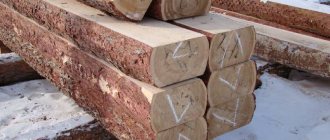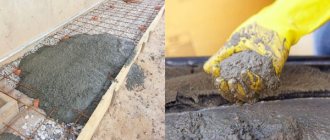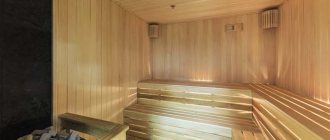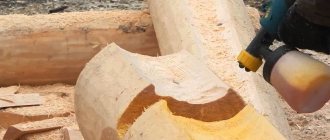According to the current SanPiN, PUE, SP and SNiP, a sauna in a bathroom in an apartment is allowed for permanent use. It is impossible to legalize such redevelopment in other premises of an apartment building. The heating device is an electric or infrared stove with a conventional, ceramic or carbon emitter. For the hammam mode, a steam generator can be used.
Do you need permits for redevelopment?
Clause 8.12 of SNiP 31-01 specifies the requirements for designing a sauna in an apartment building:
- steam room volume less than 24 m³;
- only in buildings with slab floors;
- installation of a factory oven with automatic shutdown after 8 hours or at a temperature of +130°C;
Sauna stove.
- the minimum distance of the heating device to the walls is 20 cm;
- installation of a heat-insulating board made of non-combustible material above the stove;
- air exchange rate 0.5 when not in operation, 10 cubic meters/hour for each user when the stove is on;
- prohibition on placing saunas above/under residential premises;
- use of a fire-retarding valve in the ventilation duct according to SNiP 41-01 regulations.
Fire damper
Manufacturing from scratch or installing a ready-made modular bathhouse, sauna, or hammam in an apartment falls into the redevelopment category by default. Because to connect a heating device to it, you will have to install electrical wiring and install ventilation.
This is already enough for the actual state of the layout to not coincide with the sketch plan from the documentation stored in the BTI. The apartment will become impossible to sell; the regulatory authorities of electricity suppliers and the management company may legally demand that the layout be brought back to its original form.
Coordination of the redevelopment takes place in several stages with visits to the SES, Rospotrebnadzor department, housing inspection, management company, fire service and architectural department of the local government.
It is the sauna that is specified in the building regulations, since its temperature and humidity conditions correspond to the values of +100°C ... +120°C and 15%, respectively. The bathhouse is characterized by a lower temperature of +80°C and high humidity - from 40%. When designing a Turkish hammam in a bathroom, you should take into account that at a temperature of 50°C the humidity here can reach 100%, which requires high quality ventilation.
Reviews
Vitaly, Moscow : “I want to say my opinion about the Frank F901 R closed cabin, as its active user. Stylish and comfortable. The dimensions of 110x170 allow it to be installed in an ordinary apartment. There is a hydromassage, an imitation of a Finnish sauna and a Turkish bath, aromatherapy, a radio and a touch screen for settings. There is everything you need plus rounded sliding doors.”
Anatoly, Moscow : “I live in a country house and decided to arrange a bathhouse for myself. I installed the corner box Potter A-901A L. The dimensions are rather large (1.2 x 1.8 m), but two people can walk around. There is an overhead and regular shower, hydromassage, sauna and bathhouse. There are stones on an electric fireplace in the corner. Every week I enjoy and relax.”
Selecting a room
According to statistics, users most often place miniature sauna cabins in the following rooms of the apartment:
- a bathroom is the best solution, but an area of more than 3 m³ is required;
- pantry - you will have to run to the bathroom to rinse;
- balcony/loggia is the most expensive and inconvenient option.
In principle, for a sauna there is no need to install cold water, hot water, or sewer lines. However, immediately upon leaving the booth, the problem of washing off sweat and further washing arises. Therefore, the bathroom is an ideal option for installing an industrially produced cubicle or when making it yourself.
A shower stall usually does not fit in a pantry along with a sauna. Walking through all or some part of the apartment sweaty and naked is uncomfortable and extremely unhygienic.
The same is true for the loggia/balcony. Moreover, in this case you will have to pull the power cable there.
The balcony room is not heated; in winter, when using a steam room, moisture will definitely condense and freeze on the windows. Therefore, a bath in the bathroom is initially the most inexpensive, convenient and rational option.
However, the size of the bathroom does not always allow it to be included in the project in this particular room. The two remaining options are used, although they are not comfortable.
Attention: Basements and attics of apartment buildings are common property. Therefore, the use of mini-saunas in them is strictly prohibited.
The permissible load on a balcony slab in a panel/brick building is 200 kg/m². For a loggia this figure is even higher. Therefore, from the point of view of permitted loads, it is possible to install or build a steam room here, quite officially.
An electric oven has a power of 3 - 5 kW, which is quite comparable with an electric stove and even powerful boilers, heaters, and water heater heating elements. With moderate water consumption - only to supply steam when splashing onto stones, no penalties will follow. But, only on the condition that there is no shower stall on the balcony, and the space is reliably isolated from the lower and upper loggia.
There is a practice of rinsing in fonts located on balconies near mini-saunas. But here you need to calculate the loads, and decide whether the living room with a hose stretched through it for filling and draining water will look too “collective farm”.
Hydroboxes with steam room function
Shower cabins of this type are equipped with the same set of parts as regular ones - roof, doors, tray and other elements that are present in simple hydroboxes. They differ from ordinary ones only in that they are equipped with a steam generator. Its tasks include evaporating water and cooling steam to 50 degrees. A rather serious disadvantage of home steam rooms of this class is that the steam generator is a very fancy device.
The steam generator provides high humidity, but the maximum air temperature is 50 degrees
For this device to function properly, the water it uses must have a certain mineral composition. Often, hard water forms scale very quickly, and the device’s jets become clogged. This problem can be solved by installing a special filtration system. If you do not follow these steps, the steam generator will fail in just two years. In addition, for the device to operate correctly, a water pressure in the water supply system of at least three bar is required. Therefore, in order to achieve proper operation of the device, it is necessary to equip it with an additional pump capable of pumping water to the required pressure.
The main advantage of the hydrobox's steam-generating function is its high humidity, which can reach up to ninety percent. This creates the impression of a sauna. Of course, such a plumbing device will not allow you to get the effect of a real steam room, since the steam temperature in them is usually no higher than 50 degrees.
Some models are also suitable for small bathrooms
The steam generator in this plumbing fixture is a rather unreliable device. This primarily applies to budget modifications produced in China. To avoid unpleasant surprises, it would be useful to discuss the issue of product installation and warranty service with the supplier before purchasing a shower cabin. It is necessary to clarify that the warranty must apply to all devices and components with which the shower box is equipped.
Sauna type
There is a classification of household steam rooms for use in an apartment according to several criteria:
- steam room mode - hammam with high humidity and low temperature, sauna with exactly the opposite characteristics, bathhouse as a golden mean between them;
- location inside the apartment - for the bathroom, storage room, balcony/loggia;
- equipment - with or without shower;
Sauna with shower.
- type of heating device - electric heater, infrared oven.
Additionally, home sauna manufacturers have their own classification, sometimes differing in details:
- design – finishing material, front door, shelves;
- design - island type, built-in, with a decorative facade;
- size – single, double;
- configuration – straight, angular;
Corner
- heater - with ceramic, salt, carbon emitters, built-in steam generator, Finnish, infrared, combined;
- class – Premium, Standard, Economy.
Combination stoves are considered the most convenient. In them you can switch bath, hammam, sauna modes, changing the humidity and heating temperature. IR heaters are absolutely safe, even for heart patients, the elderly and children. They do not heat the air, but act directly on the body and have a healing and preventive effect.
Steam generators are used in bathhouses and hammams; they produce portions of dispersed air saturated with moisture without dousing hot stones with water.
Modifications of shower boxes with a sauna and their fundamental differences
Today there are only two types of plumbing devices of this kind on the market, which have differences in design. Firstly, shower cabins with a sauna, which are essentially a hydrobox combined with a bathhouse in one building. Secondly, shower boxes combined with a steam room, in which plumbing fixtures that perform different functions are simply separated by a bulkhead. But don't think that these are two separate devices. It is necessary to understand what the fundamental difference between these structures is.
This design allows you to have a personal steam room at home
Project
When purchasing a factory mini steam room, installation is usually performed by a team from the manufacturer or dealer. Sauna integration problems are dealt with by certified specialists. To build such a structure on their own in the bathroom, the apartment owner will have to prepare the project themselves, taking into account the following nuances:
- PUE requirements - the stove requires a separate line from a power cable with an RCD or differential circuit breaker, a grounding wire, lighting fixtures must be waterproof;
Connecting an electric furnace
- SP and SNiP regulations - it is necessary to waterproof “wet” areas under the layer of cladding, rough finishing materials, cutting off moist air from the load-bearing structures of the building;
Floor waterproofing
- SanPiN standards - ventilation with an air exchange volume of 10 cubic meters per hour per user, the use of cladding with high characteristics of moisture resistance and hygiene;
Wood cladding
- fire safety - the use of finishing materials that do not support combustion, do not emit toxic compounds dangerous to humans when exposed to high temperatures, protection of sections of the walls, floor, and ceiling of the cabin with special fire-resistant materials.
Interesting model
One of the fire safety requirements in this case is 100% likely to be grossly violated. Since for interior walls a standard wooden frame or two of its modern varieties are usually used - imitation timber, block house.
Therefore, decorative strips are necessarily impregnated with fire retardant, and a smoke sensor with a fire extinguishing system is mounted on the ceiling for reliability. It most likely won’t save the lining, but it will get rid of the “Arsonist” stigma and allow you to maintain normal relations with your neighbors.
The steam room cabin can be built into the room or have all the necessary enclosing structures - walls, ceiling, floor. In the first case, the insulating layers necessary for its normal operation - sheet insulation, film reflective insulation, vapor barrier, waterproofing, noise-absorbing materials - are applied to one or more walls of the room.
Insulation allows you to retain the heat generated by the heating device in almost its entirety inside the structure, rather than spending it first on heating the walls and ceilings. This will allow you to quickly enter steam mode with minimal energy consumption, in this case, electricity.
In the second option, all these layers are located inside the pie of the enclosing structures of the cabin. Therefore, additional waterproofing is not needed here; it is already included in the price of the steam room.
Ventilation on the balcony is designed according to the following scheme:
- the influx of outside air is carried out through valves in the window glazing units of the loggia;
- it is supplied inside the steam room by a duct fan through a pipe of suitable diameter cut into the wall of the cabin;
- the exhaust is made to the street, for which a through hole is made in the wall or blind window block of the balcony;
- the fan must have two modes - one to ensure a standard volume of air exchange, the second more powerful for quick ventilation of the cabin after its intended use.
When converting storage rooms into a sauna, ventilation ducts are laid to the exhaust ducts of the apartment, usually to the bathroom. When installing/manufacturing a steam room inside a bathroom, a corrugation is used to connect the hood to a standard ventilation duct.
Power regulators, heater or IR emitter mode switches, lighting switches, and other electronic display and control elements are located on the outer wall of the cabin (balcony, bathroom) or room (pantry).
Rules for installing a shower cabin in a bathhouse
When choosing a place for it in a bathhouse, you should first of all focus on communication lines. This means that the pan must be connected to a sewer riser, and the water supply must be supplied with sufficiently powerful pressure. To install a prefabricated structure, you need certain materials and a set of tools. In particular, a siphon with liner, an elbow pipe and silicone sealant should be purchased in the kit for the factory box. You will also need a set of tools:
- silicone sealant;
- adjustable wrench;
- sealant gun;
- drill and drill bits;
- spirit level;
- roulette;
- pencil;
- protective gloves;
- glasses.
A prerequisite is to read the instructions from the model manufacturer. As for the installation location of the box: the area expected to accommodate the shower stall must be perfectly flat. Water drain joints should be insulated. The junction of the walls and the base must be treated with sealant.
When connecting the box drain to the sewer system, a flexible hose should be connected to the elbow and the joints should be sealed with silicone. After it dries, the hose is connected to the lower base of the shower stall
When installing the factory box, pay attention to the base of the pallet - there are legs there, the height of which can be adjusted
This is especially important when the floor surface is uneven.
The next step: connecting the siphon body to the drain hole in the pan. A flexible hose is attached to a siphon. Then the other end of the hose (pipe) is inserted into the sewer hole on the floor. The hose should enter it to its maximum depth. To connect the lower base of the cabin to the sewer system, the use of a siphon is necessary.
Using a spirit level and adjusting the height of the legs with a wrench, fix the tray into a stable position. Then the gaps formed between the wall and the edges of the pallet should be treated with sealant.
A very important stage is the installation of the metal frame. When assembling it, it is not advisable to tighten the screws too tightly. When it is ready, it is placed on the top of the pallet. Using a level, check the verticality of the frame posts. Then, using a ruler and pencil, mark the points on the wall where holes will be drilled to fix the frame. The frame is temporarily removed from the pallet. When holes are made in the wall, plastic dowels of appropriate size are inserted into them. The frame is put in place and fixed using screws. There should be no gaps between the cracks and the frame.
Then the side panels are installed. Mounts are included in the factory box. The next stage: installing the rollers on the cabin door. They are fixed with screws. Door seals and various other factory-designed parts are also installed. The final stage: installing the door handle on the cabin and insulating all existing seams with silicone sealant.
Sauna equipment
The heart of the steam room is traditionally a heating device - a heater for a bath, an infrared or electric heater for a sauna, a stove with a steam generator for a hammam. It can have one or more temperature and humidity modes, and be equipped with additional options - aromatherapy, salt dies.
If the steam room is small in size, you can make a bath canopy of 2–3 steps inside. If space allows, a full-height lounger is arranged, on which visitors hover each other with brooms.
The stove is protected by enclosing structures - railings on racks. Waterproof lampshades and LED strip are used for lighting. Temperature and/or humidity control is carried out using built-in sensors.
To ensure maximum comfort, a shower and a tray with a drain connected to the drainage system can be built into the cabin. Removable, retractable, transformable seats, shelves, floors simplify cleaning and maintenance of the steam room.
Glass doors are convenient because they do not deform from humidity and temperature, unlike wooden ones, but they are more expensive.
Types of structures
It is considered convenient to connect to a centralized backbone network integrated with the home system. If this option is not available, there are 4 solutions for draining the liquid:
- Drainage well. The model is suitable for a small washing room in a bathhouse. The “cushion”-based design will ensure natural drainage of water into the ground.
- Storage tank. The wastewater enters a special tank that must be pumped out.
- Cesspool. The underground structure is placed at a distance of 2.5 m from buildings (residential, technical and bathhouses). Dimensions are calculated based on the number of people who will use the steam room.
- Septic tank. Sewers come in single- and double-chamber types and operate on the principle of a cleaning well. The role of a reservoir is played by barrels or containers without a bottom. Crushed stone with sand is used as a filter.
When installing a shower drain in a bathhouse, pay attention to the location of groundwater. When running close, the volume of the chamber is increased, otherwise the drains will not fit inside the structure. It is recommended to install a drainage pit and a septic tank in sandy soil. In clay species, moisture stagnates.
Frame and finishing
The construction material of a traditional bathhouse is logs. However, in winter, a couple of extra fireboxes need to be installed in a classic wood-burning stove in order to first warm up the massive enclosing structures, which are actually blocks of ice in the cold, and only then go into steam mode.
For a home sauna this is not critical, since the log takes up a huge amount of usable space, and not a large bathroom. Therefore, for finishing, an imitation of logs is used - a block house, and the structure itself is constructed using frame technology. The walls, ceiling, and floor are cut off from warm air with reflective and conventional insulation to save money and time.
Rolled thermal insulation has an outer layer of foil that has vapor-proof properties. Therefore, moist air cannot penetrate to the elements of the power frame, and the overall resource of the steam room increases. Additionally, timber, boards and lining are treated with an antiseptic and fire retardant. The first composition protects the wood from rotting, the second prevents fire.
External facades and internal walls of factory mini saunas are finished taking into account classic interior design:
- glass door that easily integrates into tiled walls;
- lining made of juniper (end cut), hemlock, abasha, Canadian/Siberian cedar, linden and alder.
The wood of these species has a high decorative value and, no less important, has low thermal conductivity. That is, touching the cladding and sitting on a shelf decorated with these materials is comfortable, even at extremely high indoor temperatures.
A shower stall is usually made of clear, tinted or frosted glass. Floors in a small room are made of planed boards for loose laying with slots or tongue and groove for end-to-end installation without gaps.
Purchasing ready-made steam rooms provides a number of advantages. First of all, this is high quality assembly, the use of rare, precious wood, and hidden fasteners.
When making a mini sauna yourself, there may simply not be lining of the required wood species on the building materials market. During the cutting and assembly process, the user makes mistakes that are unreasonably expensive or reduce the aesthetics of the perception of the composition as a whole.
Photo
The device, which includes a shower stall and a sauna, makes it possible to carry out comprehensive measures to improve the health and relaxation of the body. Before purchasing, you should discuss the details and make the necessary calculations in order to properly manage your budget and purchase a functional item for the whole family.
Sauna interior design options
The most common layout options for domestic saunas for use inside an apartment are:
Thus, a mini steam room with a sauna, hammam, bathhouse mode can be assembled on a balcony, in a pantry or bathroom on your own, or you can order the installation of a factory model, taking into account the shape and size of the room.
Advice! If you need bathroom renovation specialists, there is a very convenient service for selecting specialists from PROFI.RU. Just fill out the order details, the experts will respond and you can choose who to collaborate with. Each specialist in the system has a rating, reviews and examples of work, which will help with the choice. Looks like a mini tender. Placing an application is FREE and does not oblige you to anything. Works in almost all cities of Russia.
If you are a master, follow this link, register in the system and be able to accept orders.
Apartment solutions
Modern technologies have made it possible to make plumbing fixtures multifunctional. An ordinary shower cabin can turn into a small salon with spa treatments: sauna, hydromassage, different types of showers and aromatherapy. Installing such a complex in a home bathroom or private house will allow you to get a comfortable rest, without the need to spend money on going to the sauna every time.
The presence of a steam bath with hydromassage options makes it possible to carry out therapeutic procedures to improve health and treat certain diseases. At the same time, there are several types of home boxes with a bath. The choice of one type or another may be determined by the size of the bathroom, family budget, or contraindications for health reasons.
Creation Rules
Water from the washing room to the drain tank passes through a pipe that is installed in the trench. The ditch is dug at an angle of 20 degrees. To avoid blockages, solid parts without seams or corners are used for showers in the bathhouse. If the soil freezes to 1-1.2 m in winter, then the sewerage system is insulated with glass wool or expanded clay.
Installation of drain pipes Source septik27.ru
The section of pipe entering the bathhouse is covered with a plug. The perimeter of the drain structure is covered with a thick layer of crushed stone, creating a slope towards the tank. The trench is filled with concrete mortar. To increase strength, use mesh.
The drain hole inside the shower in the bathhouse is installed near one of the partitions or in the corner. After the screed has dried, remove the plug and install the filter. After completion of the rough work, they are tiled or a pallet is placed.
If a washing room in the bathhouse is not provided for in the plan, then the floor covering in the room is dismantled for the installation, and part of the soil is removed. After installing the sewer pipe, slats are installed under the logs, which make a slope of 20 degrees. The boards are returned to their place, a drain hole is cut in the upper part. The floor is filled with reinforced screed, then the finishing is laid.











